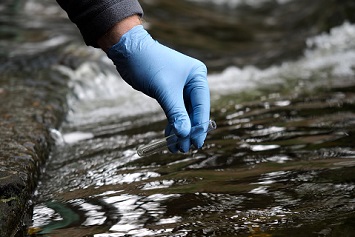During the first half of 2019, the U.S. Environmental Protection Agency’s (EPA) enforcement record has proven that the more things change, the more they stay the same. Despite shifting priorities and upheaval regarding the scope of the Agency’s jurisdiction over waters of the United States (WOTUS), the EPA has quietly continued to issue hefty fines for businesses that fail to comply with their industrial stormwater permit requirements. As it has in the past, the Agency has been focusing on entities that fail to properly monitor effluent discharges and that fail to train appropriate personnel.

kozorog / iStock / Getty Images Plus / Getty Images
In one enforcement action, the EPA fined a sand and gravel quarry $24,500 for multiple industrial stormwater violations, including failing to properly monitor all pollutants and failing to conduct training. The Agency issued a similar $24,500 fine to a concrete and asphalt producer that, in addition to other violations, failed to properly monitor all pollutants. Another facility, a sawmill and planing mill, was cited for multiple serious stormwater violations, including failing to sample representatively, and agreed to pay a penalty of $79,394. The EPA issued the largest stormwater-related fine of the past 6 months, totaling $120,000, to a rock quarry for failing to monitor its effluent discharges and for violating its permit limits.
Knowing that the EPA has and will strictly enforce the monitoring and training provisions of industrial stormwater permits, what can you do to protect your organization? Fortunately, quite a bit!
Getting your monitoring program up to speed
Before you are caught by surprise and miss your monitoring and reporting deadlines, review your stormwater permit and become familiar with the sampling schedule. Know where the outfalls, or places where stormwater discharges, are on the grounds and around the perimeter of your facility and which outfalls are designated as appropriate sample locations. You should also know which types of monitoring, such as visual assessments, benchmark monitoring, effluent limitations monitoring, or impaired waters monitoring, should be conducted at each outfall. Additionally, make sure you know who is on your stormwater monitoring team, how to contact them when it’s time to sample, and which laboratory they should send the samples to once collected.
Though most of this information should have been gathered when your facility applied for its stormwater permit and developed its stormwater pollution prevention plan (SWPPP), it’s essential to make sure that every member of your stormwater monitoring team is familiar with these fundamentals before samples must be taken so you can avoid unnecessary and expensive violations.
Training tips
To develop an industrial stormwater training program that will satisfy even the pickiest of EPA inspectors, be sure to train all employees who could affect stormwater quality, especially those who work in areas where industrial materials or activities are exposed to stormwater and those who are responsible for meeting permit requirements. Keep in mind, however, that personnel must be trained only as it relates to their job duties. Certain jobs require certain skills, and it isn’t necessary to make a worker responsible for loading or production sit through a session on the finer points of stormwater inspections if he or she isn’t on the stormwater team.
Plan to conduct stormwater training on a routine schedule. This improves employees’ retention of information and allows you to include updates on performance and to discuss issues found during inspections or maintenance activities. Facilities conducting frequent training have shown that regular refreshers can increase the effectiveness of stormwater programs overall.
To help you organize and develop your program and determine who needs what training and when, it may be helpful for your facility to develop a stormwater training plan. In the training plan, you should identify all of the best management practices (BMPs) applied at your facility, which employees have primary responsibility for maintaining and implementing them, and what other employees should know to ensure their success. Your plan should also identify how employees will be trained, whether through written materials, verbal instructions, videos, or testing, and the time frame and frequency of training for new and existing employees. With a solid game plan, your training program—and your stormwater management program as a whole—will be much more likely to succeed and avoid EPA scrutiny.